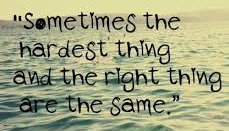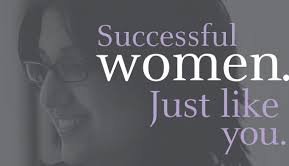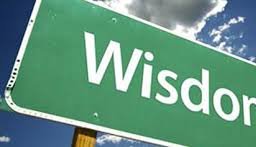I have been riven with grief, rage and fear these past 20 days. Today, inspired by a leadership blog post, I am sharing a conviction.
What occurred in Israel on Oct. 7th can go by no other name than terrorism – regardless of your political position on the Palestinians!
It must be called out as the evil it is.
Wherever your sympathies lie in the political maelstrom that is Israel, the events of that day and the following days is nothing less than a holocaust.
Leadership requires taking a stand – especially in times of grief, rage, confusion, fear. This is mine and it is an invitation to NOT be afraid to call out the morally reprehensible acts as terrorism. Equivocation is not part of taking a stand! Clarity and directness IS!
To move forward, we must see what is in front of us. In that way, the peacemakers of the world gather the integrity and energy required to forge ahead.
Take a stand!
Take a Stand
The Holiday Project
 We yearn… for recognition, connection, meaning. And the holidays make that yearning acute.
We yearn… for recognition, connection, meaning. And the holidays make that yearning acute.
- Questions brim over the containers of our consciousness:
- Are we remembered? Cared about? Included?
- Do our greetings/gifts/visits matter?
- What about the holidays is consistent with who we take ourselves to be? What isn’t?
- Who makes up our “true” family?
- Which gifts are meaningful?
And the yearning is heightened by the cultural messages that seem to intensify at this time of year – as though our very human needs are impacted by the calendar!
I find many of the folks I work with more anxious, more depressed or more withdrawn during December than the rest of the year. I sense a determination to make “the holidays bright” fraught with disappointment and stress.
What often happens during this time is attention seeping away from mindfulness practice and towards shopping, parties, vacations, hosting.
These events are wonderful – all – especially when they are approached with the mindset of paying attention to whatever is arising…”being with” it amidst all the “doing” required.
What is “being with”? It rests on noticing – noticing what is happening in the body, in the emotions and in the cognitive realm of thinking. Noticing is aided by slowing down, breathing and allowing the whispers of wisdom from our head, heart and bodies enough silence so they may emerge to guide us.
“Being with” includes treating ourselves with kindness, just for existing – without transactional
dialogues. Kindness in our thoughts, kindness in the way we treat ourselves can then infiltrate our actions towards others, the greater world.
“Being with” doesn’t preclude shopping, cooking, wrapping presents, sending cards or other typical activities. It invites deepening those actions by slowing them down so they are rooted in
caring, kindness, generosity – rather than obligation.
As we approach our activity from this place, we observe our own yearning in others and connect with them on the human playing field of recognition. We invite them into the present moment by inhabiting it ourselves – fully.
And so our holidays become holy days and whole-y days. Days in which we bring and offer ourselves in wholeness, neglecting neither our hearts, our bodies nor our thinking.
Taking on the holidays in this way is The Holiday Project – one that enriches whatever celebration we partake of – not just for ourselves, rather for each individual we encounter.
May your holidays fill with connection, meaning, recognition all held together by Love.
Embrace Failure and Find Your Power
 Often coaches (and consultants) ask, “What would you do if you knew you couldn’t fail?” I understand they ask that particular question to motivate, to support bigger visions. The trouble with the question is it demonstrates a disturbing underlying assumption. The assumption is that failure is bad for us! It isn’t!
Often coaches (and consultants) ask, “What would you do if you knew you couldn’t fail?” I understand they ask that particular question to motivate, to support bigger visions. The trouble with the question is it demonstrates a disturbing underlying assumption. The assumption is that failure is bad for us! It isn’t!
Instead, if we look at failure as a teacher, a modifier, offering up of the very feedback we need to adjust, adapt, succeed, we see the rewards instead of the embarrassment, disappointment, or other negatives associated with failing!
If we can hold failure with the respect it deserves, we can implement the adjustments, shifts, changes that make our project, our process – our very lives better. And failure offers other rewards.
We learn resilience in the process of failing… and going on. Resilience is a necessary part of living and it doesn’t arise spontaneously. It requires falling down and getting up – many, many times.
Another benefit of failure is the cultivation of the capacity to live with complexity. Failure frequently shows us what it takes to go for more complex goals, more complicated processes than we originally envisioned.
Ultimately we learn that in the face of the inevitable challenges of life – disease, old age, death, of loved ones, of ourselves, we can have the resilience and experience to meet Life and Death with grace.
Failure isn’t a dirty word. It’s an experience we desperately need – to grow, to develop a sense of our power. Without overcoming difficulties, how do we measure our strength?
What crushes us isn’t our failures but our often misguided responses to it. Why?
In a culture drunk on success stories, often “overnight” and sensational, we pay little attention to what diligent revision, adjusting, revising preceded the ultimate success. We blink at or force our eyes closed to the feedback loops offered up so generously by failures.
We forget how many attempts the Wright brothers made before they flew, or how many equations Einstein dumped before getting his theory of relativity in shape for others to understand or how many terrible predictions were made about Apple stock before they were shouted down by the introduction of the iPad. The examples pile up like driftwood after a storm. Out attention is engaged only by the the wins, the successes. Sadly, we lose out on a real opportunity to learn the value of trying, again and again and often give up too soon.
“Yes, yes” we may say to other people’s failures, nodding sagely at how they learned from their disappointments. Yet rarely do we welcome our own failures with open arms.
Failure is a part of life. The real question becomes, can we make it a welcome part? Can we see the gifts it bestows upon us – in our endeavors, in our development, in our lives?
And what about the compassion that accrues when we can see failure as something not to be shunned, but rather as a natural part of growth? Compassion is another gift that failure bestows, compassion for ourselves and others – the human condition.
If we hold failure as feedback, not only are we physically and psychologically healthier, but we open to the opportunity to succeed brilliantly. Our very power rests in the way we handle our failures.
So the question that might replace, “What would you do if you knew you couldn’t fail,” might be” What would you do if your failures provided insights, compassion, resilience and strength? As every other guest at our banquet, like Curiosity, iIntuition, Adaptability, let’s welcome Failure with the grace and dignity it deserves.
Leaders: Think Before You Speak
 Before you speak, do you clarify your intent? Whether the speaking is in written or verbal form, do you make conscious what you desire from the communication?
Before you speak, do you clarify your intent? Whether the speaking is in written or verbal form, do you make conscious what you desire from the communication?
Perhaps it is connection you seek. Or attention. Perhaps you have a specific request, say for a solution to a problem or a suggestion or idea, or perhaps what you desire is support.
Perhaps what you most desire is simple banter – a joking, humorous way to connect without deeper meaning.
Sometimes what you may want from the communication is simply to be heard.
What seems important is be be clear rather than confused, to tune into yourself and your heart’s desire so that you turn it inside out, like a pocket and tune into the other, too.
I work with highly intelligent, resourceful leaders. Often the most important shift I support them with is clarifying the intention for their communication. When that is matched up with tuning into the intention of the other/s, real dialogue follows.
So much of the concern of “public speaking” rests on formulas – start with a joke or tell a story or…. and yet, all speech is public and all communication can be true, when we are true to ourselves.
The Curse of the To-Do List
 The “to-do” list has become…..ubiquitous! (I love using that word.) Wherever your eyes fall, people are referring to them. Making them, checking items off on them.
The “to-do” list has become…..ubiquitous! (I love using that word.) Wherever your eyes fall, people are referring to them. Making them, checking items off on them.
There are new programs to bring the “to-do” list into electronic formats, mobile apps – anything to make the modest list into a 21st century technology., complete with colors, beeps and reminders – attachments to your electronic calendars. The bells and whistles are seductive and often very useful – up to a point. So what’s the problem?
Let me be straightforward. I like being organized as much as any modern day person. Everyday, I work with people chained to their “to-do” lists in the hope of “getting things done.”
I happen to be an executive coach/consultant and entrepreneur (not to mention, mother, grandmother, friend, teacher, gardener, neighbor, writer, board member and more) so staying organized it vital. My daily tasks, like yours perhaps, range far and wide between my many projects, my home and garden, family, friends, wellness and personal development. Then there are the externally imposed deadlines I must meet – insurance payments, dog license renewals, and the like. I hate to pay late fees or fines, so staying on top of these is also critical to me. However, I know that there is something more important than simply checking off things that need doing.
I know my life matters…that it works best when I balance my many interests, passions, loved ones and tasks in a way that moves me forward into a vision I hold for contributing to the planet. Hopefully, you do too!
As an executive coach, I help leaders reflect on the “right” things – the things that leverage their intentions and projects – at home and at work . The things that make life yeasty and rich – meaningful. They begin with setting clear intentions, go on to prioritizing their commitments and working from that deep understanding.
This isn’t a new idea. It’s been around for a long time and many famous books and lectures refer to it. (Steven Covey wrote about it as did David Allen and scores of others.) But our culture has somehow lionized the “to-do” list as the vehicle for getting things done. And in the process caused a lot of confusion – which ultimately mean pain. Here’s how.
When activity (the endless items on the “to-do” list) controls your day, you are living into the great curse of modern times. What’s the curse? It’s the confusion between action (doing those things that further your clearly established intentions – priorities) and doing “stuff” that appears to need doing (which are endless) and which aren’t aligned directly to what is most important to you and most urgent in any meaningful way.
In the scramble to find more time, to get more done, to complete the list, people mistake one thing for another. Action includes activity but is the large, clear driver for getting the done the things that matter! Action has power – an inner dynamism. Activity are the smaller steps to achieving that dynamic vision for your life. And if you confuse the two, you often end up wondering why you feel unsatisfied, dispirited, unbalanced.
The antidote to the curse takes a little time at first, and pays off in clarity and purpose driven action. To establish the habit of beginning the day’s plan from the perspective of your intentions, you must first establish them. After a period of reflection on the domains of your life – ntimacy, money/finance, career, family/friends, health/fitness, personal growth, fun/recreation, contribution, you set your intentions for each.
It may sound like: ACTION: health = eat well and stay fit (Activities = exercise 3 x’s per week, shop and cook organic, sustainable foods) Your planner placing the shopping day and times and items to purchase down and the exercise days and times on calendar.
I use the famous quadrant system each morning: 4 boxes labeled Urgent & Important (what matters most and has to get done today) Urgent & Not Important (externally imposed deadlines – pay taxes, for example that do not further my intentions AND must get handled) Not Urgent and Important (these align with my priorities) and Not Urgent and Not Important (my fanciful activities should a block of time suddenly appear). The last box I may never get to – or I may do on a break from the rest.
There are other systems to categorize your activities according to your priorities. Find one you like. Whichever one work best, it must begin with intention setting and prioritizing to be efficient and to be powerful….otherwise you find yourself lost in the spin of “I’m really busy…but what exactly am I accomplishing???”.
Afflicted with the curse of the “to-do” list, hundreds of thousands of folks keep endlessly repeating the phrase, “I’m so busy,’ without waking from the hallucination of being lost in rounds of activities that don’t reflect their values, deep concerns or intended outcomes.
Don’t let that be you! You are not a victim. Take some time to reflect on what matters most. Male a list. Number the items by priorities (soul-searching and hard but so worth it). Break the actions down into activities (steps) in sync with a calendar. Include the externally imposed deadlines. Check your calendar against the top 10 priorities. Are they represented most often? If not, adjust! It will initially take some time, however soon, it will be an automatic planning habit that sets you up for balance, success and joy!
Work from that plan – a plan that takes all of your life into account, allows for the inevitable outside demands and leaves you, at the end of each day, clear about what you are up to in this world.
End the curse and step into that bigger, more meaningful life.
In Defense of Hard Work
 I’ve lived, learned and worked on the planet for a long time. One beautiful occurrence I note each day is the synthesis of lots of learning and lots of experience. And as a woman, mother, grandmother, friend, aunt, teacher, executive coach, reader, writer, entrepreneur, world traveler, neighbor – and more – those experiences come from many different streams of life. Like the many streams that ultimately become the ocean (and come from it) learning and living make for a delicious flow. And this flow impacts the work I do with leaders.
I’ve lived, learned and worked on the planet for a long time. One beautiful occurrence I note each day is the synthesis of lots of learning and lots of experience. And as a woman, mother, grandmother, friend, aunt, teacher, executive coach, reader, writer, entrepreneur, world traveler, neighbor – and more – those experiences come from many different streams of life. Like the many streams that ultimately become the ocean (and come from it) learning and living make for a delicious flow. And this flow impacts the work I do with leaders.
I love working with leaders – passionate, intelligent, ambitious, resourceful. I support them by offering up much of what I’ve synthesized in this long journey to NOW! What I cannot offer are easy solutions or quick fixes. Instead, I offer hard work!
These days lots of advice comes in the form of 10 Easy Steps or The 3 Secrets to Success, etc. etc. I don’t buy into that model of support. Its outside everything I know about living into a conscious, intention oriented existence that contributes to the planet.
This being human is complicated, mysterious and wondrous – but not without struggle. In my experience, those willing to take up the challenges, fail, get up and go on, make the best leaders. Why?
They grow compassion – empathy with each failure. They grow resilience. There courage increases tenfold each time they get up and try something else. They utilize feedback and leave the self-hatred on the cutting room floor. And they lead by inspiring others with their vulnerability and strength.
In my 66 years on planet earth, I’ve met so many people. I take time out occasionally though at regular intervals, to reflect on who has influenced and inspired me. And I sit in my deep well of gratitude.
Some peeps inspired by example and some by example of how not to be. All were teachers who taught me, and today, while I don’t value one type of teacher over another, I have had my preferences.
And circumstances change. Life is too dynamic an event to chain with rules. It is our creative responses to what shows up that is a measure of our epth, our leadership, our self-mastery.
“If you realize that all things change, there is nothing you will try to hold on to. If you are not afraid of dying, there is nothing you cannot achieve. – Lao Tzu
Who has filtered down through the years as a valuable, precious teacher to me, are the people who acted with courage despite their fears, shared their vulnerability despite their strengths, stayed their course in the face of thorns and sorrows, spoke truth as they understood it, knew the real work was on themselves, and encouraged others sometimes with kindness, sometimes with challenge – knowing what was needed, when.
They are the heroines and heroes I look to when I think about leadership. They live outside the bounds of 10 easy steps and 3 secrets to success – as they live in complexity. They are always uncovering more and more of themselves, not settling for the smaller version.
No matter who you are, no matter what you did, no matter where you’ve come from, you can always become a better version of yourself.” – Madonna
I do not believe in shortcuts in a meaningful life – only on my computer and perhaps, when I’m cooking. And though I love shortcuts, actually feel like I’m secretly victorious when using them, I know better than to assume there are easy solutions or quick fixes to what really matters. And so I don’t offer them in my work with leaders – seasoned or beginning.
Developing into the kind of person who can say at the end of a career, or better still, at the end of a life, that the journey was a well worn and challenging path, on which we struggled and also rejoiced, fell down many times but got up more and offered something of ourselves to the world, mostly holding hands, well – that hard work is what I’m talking about.
Won’t you join me on that path? There’s always a free hand ready to take yours.
Mobilize for Wisdom: Mindful Women Leaders Step Up
 When smart women leaders decide to become more skillful, they look to mindfulness practices for support…and its a very good thing!
When smart women leaders decide to become more skillful, they look to mindfulness practices for support…and its a very good thing!
Cultivating mindfulness allows you to “attune” to what is happening – not just “see” it. That means noticing the tiny details – a muscle tightening in someone’s jaw, the temperature of the room rising by 1 degree, the body language of the person on your left shifting, the increased blink rate in your favorite direct report’s eyes and make sense of it – all this while carrying on.
And why is noticing important? Because it allows you to respond appropriately! That’s attuning – an almost musical adjustment to the circumstances in and around you like a well orchestrated dance. And like a dance you’ve practiced over and over, it becomes automatic at some magical point – you know longer need to “think” about it.
Naturally, when you’re leading a meeting or presenting to a group, you’re experiencing a bit of nervousness (unless you’ve had vast experience or are made of brick). Some of that nervous energy is great – gives you a flush of aliveness and keeps your edge sharp. Too much, though, closes down some important channels.
When you’re very nervous, you can’t attune to the folks in the room with you or note the highly subtle changes taking place in people or on the energy of the room as you speak. Get anxious enough andy you can’t even tell where the whiteboard is or whether there is one!
And how strategic can you be when you’re awash in self doubt or worse, self-flagellation? You can’t access your diamond-like clarity or your juicy creative energies when constricted by anxiety or fear.
Why?
Your nervous system sends messages to your brain to conserve energy, a subtle decline in the amount of gas you’re pumping. And if gas is the fuel you need, you won’t get very far without it, right?
If you haven’t cultivated the capacity to take in large amounts of very subtle data, synthesize it and use it to adjust your message, you’re caught. Adjusting your message doesn’t mean changing direction – not at all – it means, being responsive by altering your pace, perhaps adjusting your tone, changing volume, or adjusting eye contact, perhaps adjusting the amount of space – moving closer to or farther from someone – all this, to make your message land more effectively.
If you cannot adjust and speak coherently at the same time, you’ll sound automated – like a valedictorian delivering a speech, rather than as a leader sharing perspective, ideas, information or seeking them. Your attention will ping pong back and forth between your words and your tension and no adjustments will be possible.
Most importantly, you won’t get caught taking everything so personally. You can – hold a wider perspective. Without blowing this event up into a “life or death” drama, you can relax, breath, let your endorphins loose. And guess what? You’ll be more approachable and more effective.
As you cultivate this capacity, not only will you be able to forgive yourself and others more readily – noticing that life is happening all the time so this event isn’t a trigger, you’ll develop more compassion for our human condition.
Here’s where mindfulness comes in. Practicing every day has many great benefits. First, you can stay calm in the midst of chaos – not because it won’t arise, but because you can quickly return to center. There’s enough research now to prove how your brain is effected by consistent, ongoing practice.
Next, the freedom from many conditioned fears, opens you up. And when open, you take in more – more of what is right in front of you but so subtle you could easily miss it.
In addition, mindfulness allows you to sense yourself – quickly. If a question is raised as you speak, or an objections is made, you notice how you react – for example, you might contract in the pelvis, grow tense in the jaw or clench your fingers. Knowing this is happening allows you to release yourself back into a productive stance – more curious, open, less defensive. This in turn, changes the energy around you and invites others to also relax – all -on an unconscious level.
Attuning to the different personalities, who are showing up out of their own conditioned patterns, keeps you from projecting fears onto them. Example, John interrupts and you immediately think, he hates my idea , when John is perhaps an oppositional learner – seeing first what is out of sync before resting into the overall picture. Not taking John’s interruption personally, and not allowing fear to strangle your voice, creates space to regroup and explain clearly, confidently.
Mindfulness isn’t a book you read, however. It is a way of walking through the world and leading your team, organization or business. And it requires a commitment. Like building any habit, you have to be consistent until it becomes a natural part of your day -one you won’t have to think about or resist, like washing your face or brushing your teeth.
To cultivate this habit, it helps to pick a time of day and place to practice. Repeating it daily at the same time and in the same place is an anchor that supports practicing on those days you’d rather do something else. It is far more useful to practice for a few minutes everyday than to sporadically spend an hour.
Finding a practice that suits you is easy these days. Youtube offers many “how to” videos with explicit instructions. Classes in mindfulness are offered in most cities. Instructors of yoga, tai chi and qigong can point you in the right direction too. And finally there are great books like Mindsight by Dan Siegle, a a clinical professor of psychiatry at the UCLA School of Medicine and Executive Director of the Mindsight Institute with dozens more coming out each year, to help
Taking charge, for women, doesn’t mean domineering or manipulating. It allows you stay real, stay kind and stay attuned to what is happening in and around you. So step up – here’s is an invitation to take charge of yourself, so you can better serve your team, group, family or company with confidence, clarity and compassion.
And if you’d like support, come join us on May 20th.
Women: Don’t “Just” Yourself
 Women are amazing – brilliant, creative, compassionate, kind. Yet often, when they step into positions of leadership, one of the hazards they face AND rarely notice are their speech habits – the ones that undermine them.
Women are amazing – brilliant, creative, compassionate, kind. Yet often, when they step into positions of leadership, one of the hazards they face AND rarely notice are their speech habits – the ones that undermine them.
Women’s unique way of communicating tends to be collaborative, consensus-building and inviting – much needed attributes in conscious leadership. There’s no need to change that – it a gift to the team, the project, the organization and direct reports appreciate it too! Also, there’s no need to take on a style that’s inauthentic. Women DO NOT have to become man-like to lead!
However, it is time to put away the self-diminishing ways of speaking that stem from being afraid of your own power or from believing what your harsh inner critic has to say. Its time to stop offering up your brilliance in tentative, self-deprecating ways.
So how to begin? Start moving into authentic communication by being mindful.
- “I’m just wondering…”
- “I just think…”
- “I just want to add…”
- Drop the “just.”
“Just” demeans what you have to say. “Just” shrinks your power. Get rid of the “justs.”
How?
First, increase your awareness of the unhelpful speech patterns you currently use by simply listening to yourself. Recordings give unbiased, useful feedback. Or ask a trusted colleague to monitor your speech for a day.
Check whether you speak the same way at home as you do at work, in the boardroom, when you’re presenting. Its important to notice whether stress shifts you into certain speech habits.
Then set an intention to work on your unhelpful habits one-by-one. Set in by staing it in the present tense. An example might be, “I speak without diminishing my thoughts and ideas.”
Drop the “just” (and the “you knows” and the ubiquitous “like)”.
A sentence that goes, “I just want to report a 3% increase in sales,” is more powerful as, “We’ve experienced a 3% increase in sales.” Here the shift is not only in removing the “I” and the “just” which leaks power, but gathering up the energy of the collective.
Unless you are reporting on something you take full responsibility for, watch out for the “I just” statements.
Speech habits are mostly unconscious. As you begin to surface them, you’ll be able to make the small but important changes that help you fully inhabit your leadership without diminishing your authenticity.
Stop undermining your power, so you can make things happen…brilliant things…the “right” things that move your organization or business forward.
Women Leaders: It’s Time to End the Suffering
 The reason many brilliant women struggle to fully inhabit their leadership has little to do with where they work. Or men! Even juggling family and career isn’t the main culprit. So what is?
The reason many brilliant women struggle to fully inhabit their leadership has little to do with where they work. Or men! Even juggling family and career isn’t the main culprit. So what is?
Most often, what holds women back is a question they run over and over in their heads like a mantra: “Who am I to be leading? In other words, their inner critic demon voice shouts louder than all their achievements, promotions, smarts and – even rational thought! The suffering comes from self-sabotage of the not so subtle variety – but it goes undercover because we know enough to know not to share it with colleagues and bosses. And though it has deep roots and originally arose as protection, long ago, it stopped serving us.
I know this demon voice well, having wrestled with it each time a new incarnation (as a teacher, principal, trainer, consultant, executive coach) occurred. It was painful and debilitating – sapping my creative juices, taking up residence in my head and undermining my confidence… until I learned how to integrate it – with the other voices, the happier one, the more successful, ones pointing to historical evidence of competence, even some hard earned kudos and wisdom.
Throughout my executive coaching career, I’ve seen smart, creative, collaborative compassionate women sabotage themselves too many times for it to be coincidence. There are multiple ways it rears up – some minor ( speech habits) and some more major (how they hold their bodies) AND almost always partnered with this dark, sticky, insidious self-doubt.
As Dr. Rick Hanson, author of Buddha’s Brain, and his latest Hardwiring Happiness, recently pointed out, the brain has a natural override to focus on the negative. (It’s a survival learning mechanism from our days on the savannah when learning to avoid the saber tooth tiger and aggressive alpha males was essential to see tomorrow) and it’s fascinating – except when it keeps you from fully inhabiting your power.
The good news is that women, once they admit to and “own” their sabotaging thoughts and behaviors, can eliminate their potency. There is a way out of the ongoing labyrinth of undermining one’s own confidence and brilliance.
And I love showing women how it’s done – supporting the shifts to make it a permanent transformation rather than just a useful recognition.
When the question changes from “Who am I to be doing this” to “Who am I not to”, coupled with certain words, body language and a healthy stance, amazing things happen.
Naturally there are specific practices, exercises and a commitment involved. It’s about new behavior, not just new thinking, right? And do you know of any meaningful transformation that occurs without being embodied? The rewards, however, are mighty.
Without sacrificing their compassion, collaborative spirit or integrity, women step up to making an impact on their teams, organizations, the world – sharing their much needed ideas, asking their provocative and necessary questions, birthing their deeply longed for contributions.
Women in leadership, please make the shift. The world awaits you!
********
If you’re a brilliant woman struggling to fully inhabit your leadership, check this out.
Leadership Embodied: How to Mobilize for Wisdom Now
 So you think your body is just the container to get your mind from place to place? Wrong! Or you imagine great leaders come only from great schools? Wrong again. Or perhaps, you imagine they are just born that way? Sorry, wrong again! Or partially wrong…yes some leaders come naturally with an innate ability to tune into themselves, but most learn it along the way – like you and me – through experience, commitment and dedicated practice.
So you think your body is just the container to get your mind from place to place? Wrong! Or you imagine great leaders come only from great schools? Wrong again. Or perhaps, you imagine they are just born that way? Sorry, wrong again! Or partially wrong…yes some leaders come naturally with an innate ability to tune into themselves, but most learn it along the way – like you and me – through experience, commitment and dedicated practice.
Think about the great leaders…those that got BIG things done, inspired movements: changed history; an industry; a country; a sport – leaders like Rumi, Chade-Meng Tan of Google, Nelson Mandela, Sheryl Sandberg (COO of Facebook) Mahatma Ghandi, Janice Marturano of General Mills, Coach Krzyzewski of Duke University, Pema Chodrun, the Dalai Lama, Anne Lamott, Anne Sweeney (President of Walt Disney), Martin Luther King, Jr… the list grows too long to capture (made up of both men and women, of every religion, race and skin tone).
Even with EQ (emotional intelligence) getting more play time from the current leaders’ field of attention, the body gets short shrift, though we’re learning more and more about its powerful and precious offering.
Stephen Covey famously referred to “the space” between stimulus and response. Guess what container holds that “space” ? What allows you to activate the knowledge wedged there? Your body! So where’s the key to that magical chamber? Read on.
A lot of your “knowing” comes directly from your body if and only IF, you allow it. Notice I said knowing – not guessing, or forcing a solution, not facts and figures – no, plain, old fashioned wisdom. Why?
You’ve got a second brain – in your belly. Yes, the research found in the 1998 book The Second Brain by Dr. Michael Gershon points to how mood and well being are influenced by the secondary enteric nervous system.
“The second brain doesn’t help with the great thought processes…religion, philosophy and poetry is left to the brain in the head,” says Gershon, chairman of the Department of Anatomy and Cell Biology at New York–Presbyterian Hospital/Columbia University Medical Center, an expert in the nascent field of neurogastroenterology.
“The system is way too complicated to have evolved only to make sure things move out of your colon,” says Emeran Mayer, professor of physiology, psychiatry and biobehavioral sciences at the David Geffen School of Medicine at the University of California, Los Angeles (U.C.L.A.). For example, scientists were shocked to learn that about 90 percent of the fibers in the primary visceral nerve, the vagus, carry information from the gut to the brain and not the other way around. “Some of that info is decidedly unpleasant,” Gershon says.
The second brain informs our state of mind in other more obscure ways, as well. “A big part of our emotions are probably influenced by the nerves in our gut,” Mayer says. Butterflies in the stomach—signaling in the gut as part of our physiological stress response, Gershon says—is but one example. Although gastrointestinal (GI) turmoil can sour one’s moods, everyday emotional well-being may rely on messages from the brain below to the brain above. For example, electrical stimulation of the vagus nerve—a useful treatment for depression—may mimic these signals, Gershon says.
In every millisecond, your body is taking in vast amounts of information – far too quickly to process consciously. Temperature, another’s body language, facial expression, unconscious gestures, spatial configurations, mood, energy levels, emotional readings (for both yourself and others’) and synthesizing this data with all prior experience and oceans of ideas churning constantly through your brain above.
In the synthesis of thought, emotion and sensation, informed by both nervous systems, true “knowing” arises. This powerful mix is sometimes called “a hunch” or the more flatteringly “intuition” by those that don’t really understand it. Yet those who have practiced mindfulness and some somatic practice ( a martial art, Tai Chi, Qigong, leadership embodiment, yoga) can over time, sense into a situation, extract vast amounts of information, attune to the information pouring in, hone it, synthesize it and act. They avail themselves of what constitutes wisdom.
Its time to pay much more attention to this somatic( some – Greek word for the body) intelligence. Embodied leaders do. And you’ll want to integrate the wisdom from the body with that of your heart and mind for optimum leadership.
